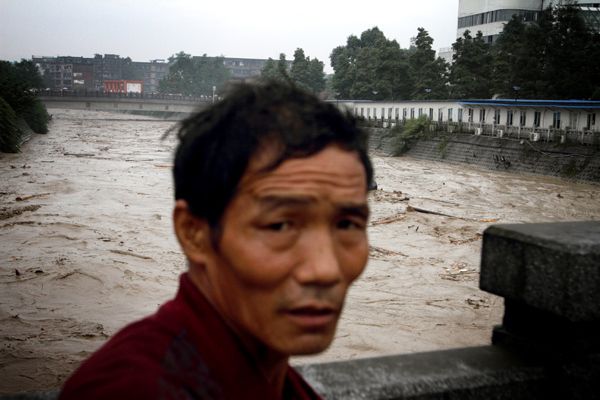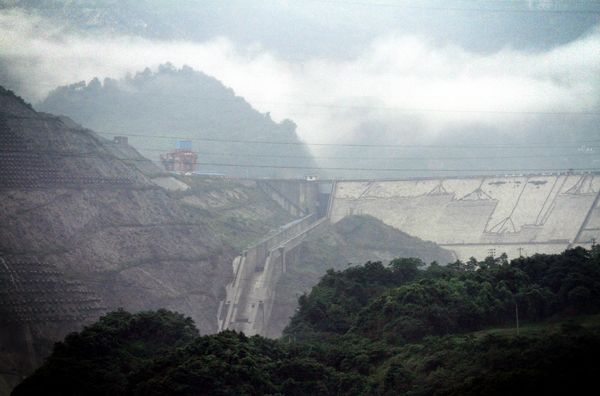Water did not seem in short supply as I arrived in China's southwest province of Sichuan. Rain was pounding on the windshield of my taxi and pools of water were starting to flow down the streets of the province's capital, Chengdu. People scurried around the streets, desperate to get out of the storm that had quickly descended on the city.
This unsavory welcome was compounded by the delivery of bad news from my assistant upon my arrival at my hotel. Our primary location for the week, the largest highland marsh and peat lands in Asia, Ruoer'gai in the north of Sichuan, had just been sealed off from the outside world. The heavy rains had caused landslides which had wiped out all roads leading to the 3500 meter plateau which it sat upon. These marshes comprise half a million hectares and have been dubbed the 'kidneys' of the Qinghai-Tibetan plateau. Made up of 90 percent water, they act like a sponge sequestering carbon and providing a home for a vast range of highland species. A vital ecosystem and source of water, they are the origin of the Yellow River, one of China's mightiest waterways.
In recent decades however, this important ecosystem has come under threat. According to researchers from Chengdu Institute of Biology and the Chinese Academy of Sciences, "due to global warming and unwise use of the marsh resources, including ditching for grassland enlargement, peat exploitation, and livestock grazing, since the 1970s, Zoige [Tibetan name] Marsh has suffered severe ecosystem degradations such as vegetation recessive succession, biodiversity loss, soil deterioration, and rodent disasters."
For me, Zoige/Ruoer'gai would have to wait. Recent landslides in neighboring Gansu province had tragically taken the lives of over 100 people. The risks of traveling to these areas was too great, so I turned my attention towards a town nearer the provincial capital.
Located approximately 50 kilometers west of Chengdu, the Min river crashes through shear faced gorges, winding its way downhill into the town of Dujiangyan. It is a stunning location as the mountains loom large around the central conurbation and the river flows through the town using a number of channels. On closer inspection, as you peer though the mild haze from the nearby crashing water, it is quickly apparent that these channels are man-made.
Originally built in 250 BC by then-governor Li Bing, the Dujiangyan Irrigation system is regarded as an "ancient engineering marvel." By naturally channeling water from the Min River during times of flood, the irrigation system served to protect the local area from flooding and provide water to the Chengdu basin, an area of rich farmland and intense productivity. Over 2,000 years later, the system is still in operation and serves as a testament to the sustainable management of water and wetlands with minimal ecological impact.
The rain smattered my face and lens as I strolled around the center of Dujiangyan town. The rains had not ceased since my arrival and the growing amount of water in the Min river was starting to be of concern to local residents. As I peered over a barrier separating the main high street from the drainage channel below, the crashing brown water carried with it tree stumps, branches and even inflatable rafts, washed downstream from a tourist site upriver. "This does not happen very often", said an old man to me as we both watched the amazing amount of water that was rushing through the channel just a few meters below us. If anything, this was what the system had been built for and had been doing for hundreds of years: effectively controlling water.
The next day, the rain was still coming down as we waited in a traffic jam on one of the mountainsides outside of the town. Streams of water gushed by the side of the road, racing over the concrete and accelerating away from us along with mud and pieces of vegetation. Up ahead the mountainside had collapsed onto one half of the road, bringing everything to a standstill. As we crept past the mass of mud blocking the road, we made a final turn which brought us face to face with the structure we had been trying to reach: a 511 foot wall of concrete.
Just a few kilometers upstream from the Dujiangyan irrigation system sits an example of a more modern Chinese way of controlling water, the Zipingpu Dam. Lying high in the mountains above the town and holding back 315 million tons of water, it is one of the growing army of dams in China, used to harness the power of the country's rivers.
"Today there are more than 25,800 large dams in China, more than any other country in the world", according to International Rivers, an organization seeking to highlight the effects of development projects affecting communities worldwide.
China's dams are notoriously controversial. The environmental impact to wetlands are well documented and include concerns over fish migration patterns, landslides caused by bank erosion and the accumulation of industrial effluent in the resulting reservoirs. It's a pattern of concern which has been seen in many locations across the country.
"Is the dam safe now?" I asked my driver. "Yes, of course, no problem." He laughed as he replied to to me but I wasn't completely convinced.
In 2008, the devastating Sichuan earthquake struck just a few kilometers from Zipingpu, wiping out 80 percent of buildings in Dujiangyan alone and tragically killing over 80,000 people in the immediate area. Reports following the quake stated that "extremely dangerous cracks" had emerged in the dam, but it was the emergence of information connecting the dam and the earthquake, which elicited most concern.
According to International Rivers, "Seismologists from China's Earthquake Bureau had warned the government back in 2000 that the project should not be built given its proximity to a major fault line, yet these warnings were ignored." Reservoir-induced seismicity remains a controversial topic however it is just one of the many problems and issues that seem to be stacking up against the use of dams in China.
Nowhere else in China can you see two such stark examples of the different potential ways to control water. The first, a 2,000 year old cyclic system that harnesses and works with the natural ebbs and flow of the river. The second, a modern approach which seems to stifle and block, causing numerous detrimental environmental and social effects. As China's dam production increases, the effects on the country's wetlands will no doubt continue to be profound.













